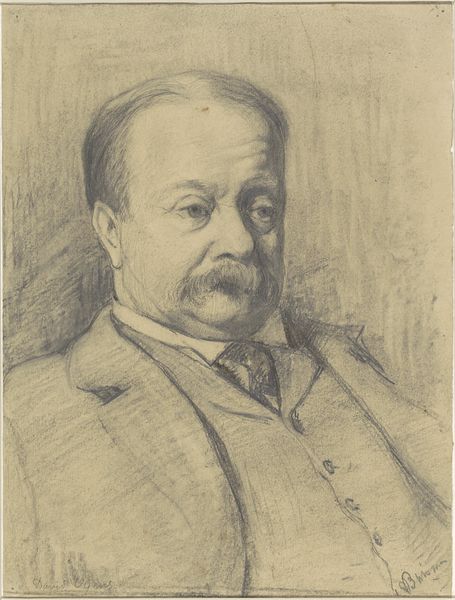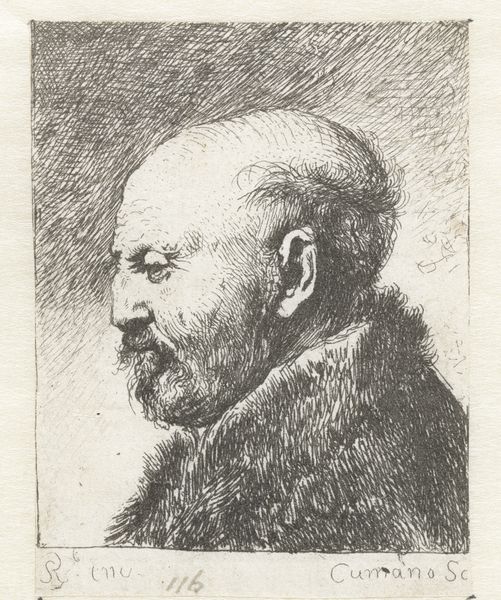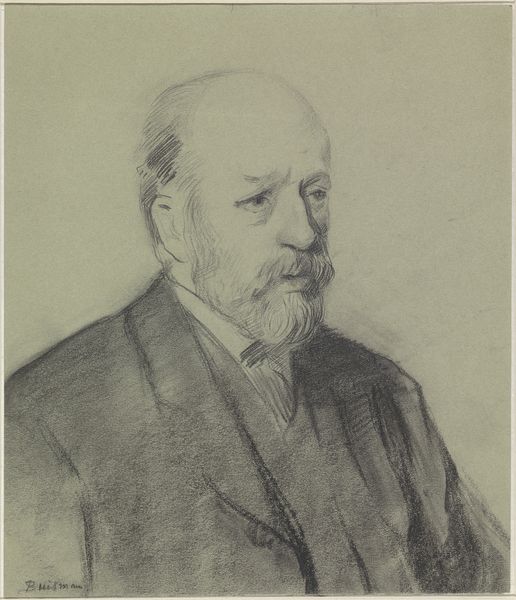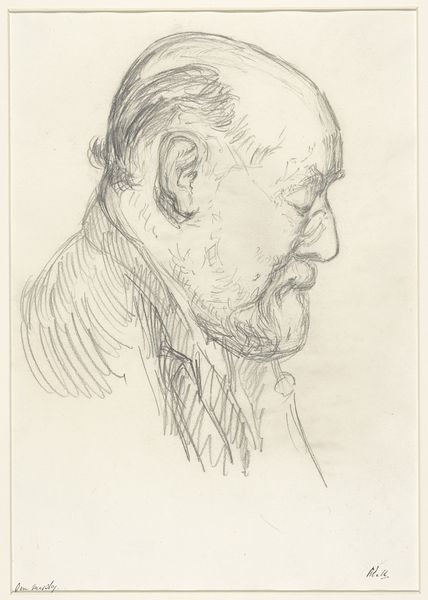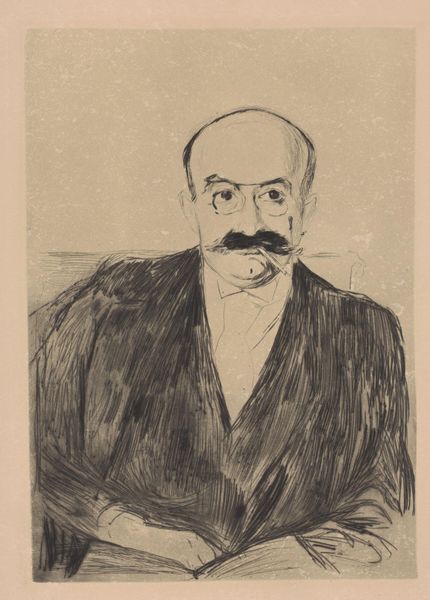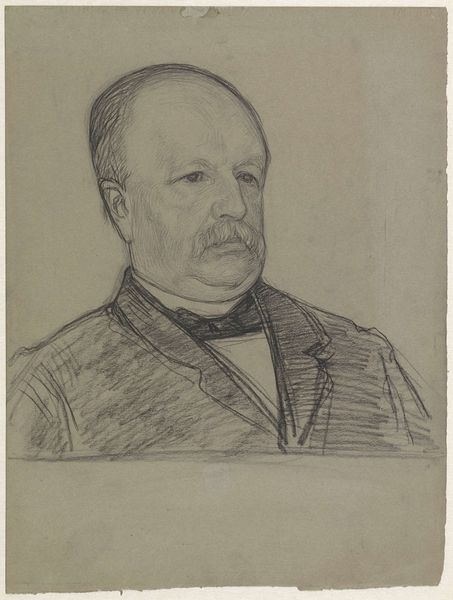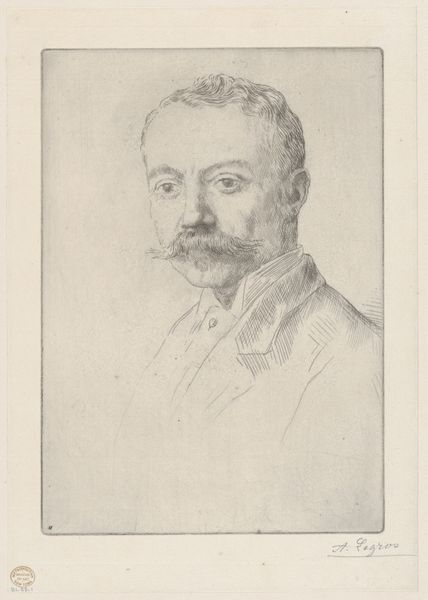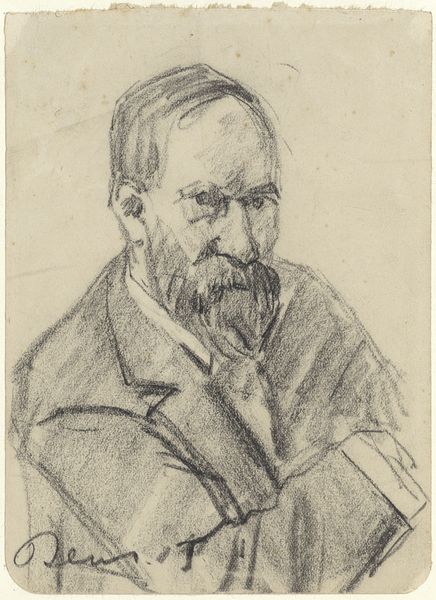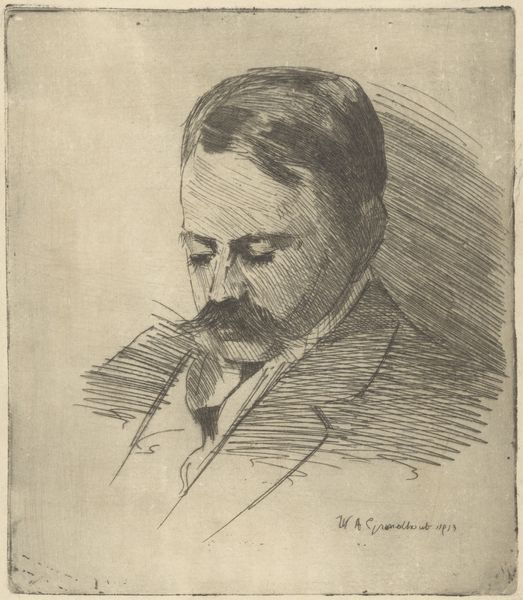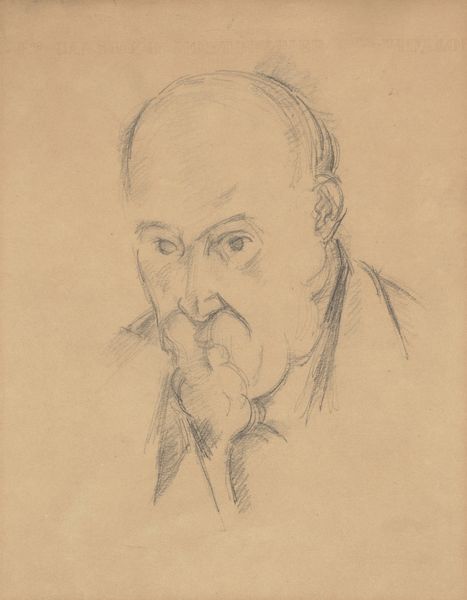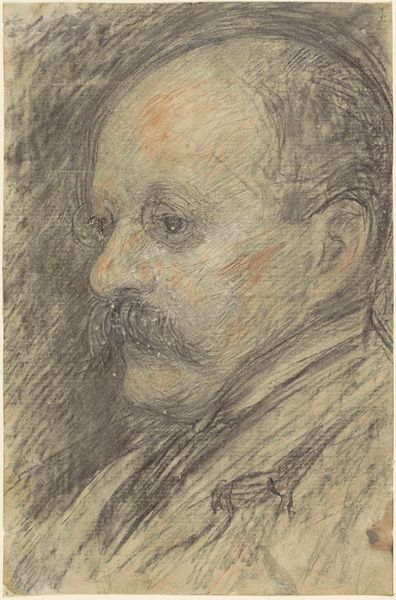
drawing, pencil
#
portrait
#
pencil drawn
#
drawing
#
pencil sketch
#
charcoal drawing
#
pencil drawing
#
pencil
#
portrait drawing
#
realism
Dimensions: height 210 mm, width 178 mm
Copyright: Rijks Museum: Open Domain
Editor: This is Jan Veth's portrait of J.C. van Marken, dating roughly from 1874 to 1925. It’s a pencil drawing at the Rijksmuseum. It strikes me as a very formal portrait, almost austere. What do you see in this piece, considering its historical context? Curator: Beyond the formal pose, I see a representation of power and industrial progress deeply embedded within the social fabric of the Netherlands during that period. J.C. van Marken was a prominent industrialist. Do you think Veth's artistic choices reflect or perhaps even critique that social power? Editor: I hadn't really considered that! The realism seems almost neutral, just a straightforward depiction. But perhaps the choice of pencil, the lack of color, speaks to a certain austerity befitting a captain of industry? Curator: Precisely! The very deliberate rendering of Van Marken's features, that meticulous mustache, speaks to a careful construction of identity. It begs the question, whose narrative is being told here and for what purpose? Was this a commissioned work? If so, how did that influence Veth’s approach? Editor: That’s fascinating. I was focused on the artistic technique, but now I see the portrait as a cultural artifact, loaded with meaning about class and industrial ambition. Curator: Exactly! And understanding those forces at play enhances our understanding of the portrait and the society that produced it. Do you think this is how portraits are perceived today? Editor: Not always, but it’s definitely made me think more critically about how power dynamics shape artistic representation. Thanks! Curator: The pleasure was mine. Always remember that art serves as a mirror reflecting society’s values, struggles and progress.
Comments
No comments
Be the first to comment and join the conversation on the ultimate creative platform.
